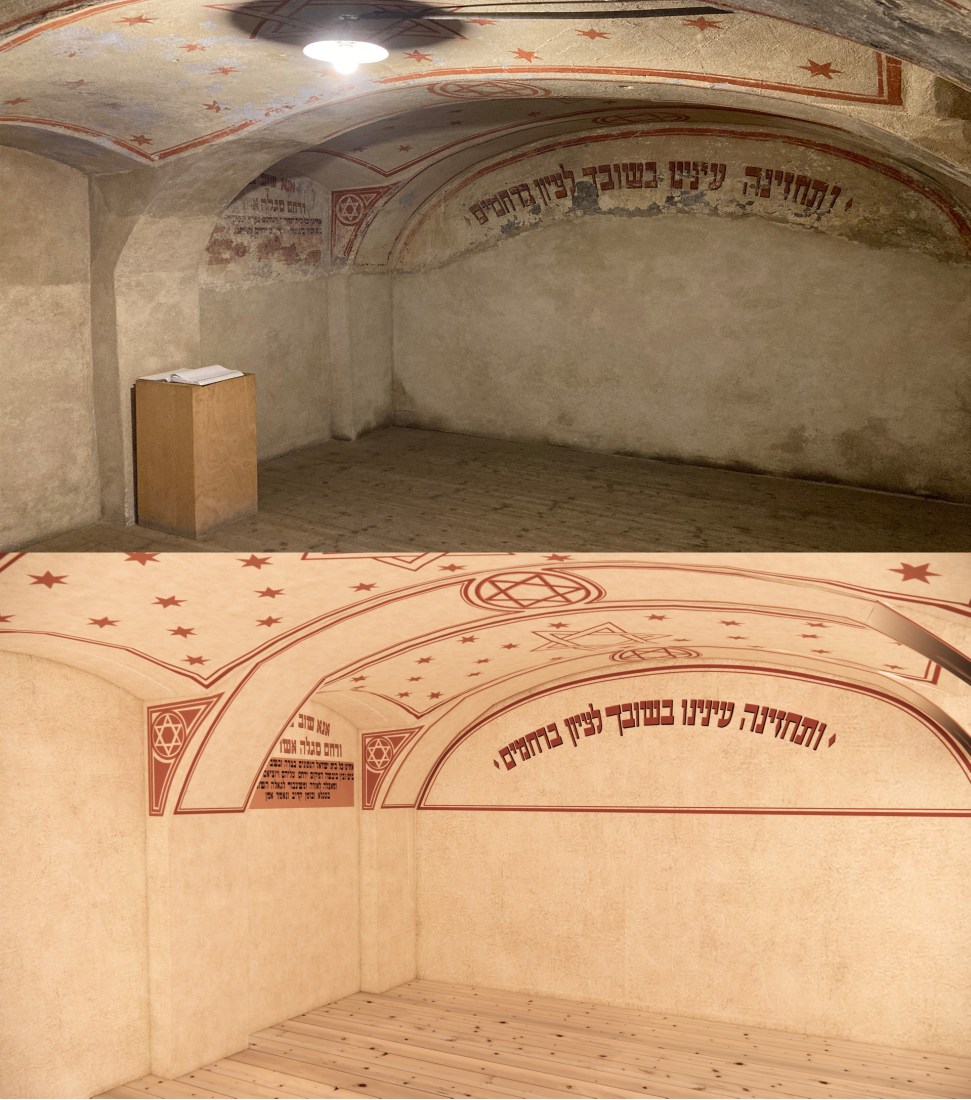Northeastern student brings new life to powerful history behind Secret Synagogue of Terezín

Terezín, a small town in the Czech Republic, is not often included in history books.
A ghetto and concentration camp during World War II, Terezín served as an antechamber to Auschwitz. Of the more than 150,000 Jews who passed through the camp during the Holocaust, only a few thousand saw the end of World War II: 83,000 were sent to extermination camps farther east, like Auschwitz, and 35,000 died in Terezín itself.
It was a site of incredible suffering––but also a place where Jews found space for hope, creativity and culture.
Ethan Rogers, a third-year architecture student at Northeastern University, is capturing and restoring that history through a story that has been told but largely relegated to the sidelines of Jewish history: the Secret Synagogue of Terezín. A place of worship for Jews hidden inside a storage room in the Terezín camp, the Secret Synagogue is a story of hope in the midst of devastation.
Rogers, the 2022-23 Holocaust Legacy Foundation Gideon Klein Scholar, kicked off Northeastern’s annual Holocaust and Genocide Awareness Week on Monday, March 27 with a presentation of his research on the site. Rogers also unveiled a virtual and physical recreation of the Secret Synagogue that he says aims to preserve and restore the “architectural, artistic and religious history” of the site and highlight its significance for Jews past and present.
“Obviously, you can go and see the space––it’s still open to the public––but I think it’s really important that people see the restored version and the texts in full and get an understanding of how this space originally looked when Jews used it back in Terezin,” Rogers tells Northeastern Global News. “It’s important to bring light to these smaller stories.”

The story of the Secret Synagogue of Terezín starts with Artur Berlinger, a Jewish community leader and artist who was held in Terezín. Berlinger was a member of a well-known Orthodox Jewish family in Germany, and, notably, he served in the German army during World War I.
In 1942, he and his wife, Bertha, were deported from their town and arrived in Terezín, which the Germans had converted into a ghetto and transit camp a year earlier. The conditions in the camp were miserable, but Rogers says there was a rich cultural and religious life there.
“Jews set up small, makeshift prayer spaces all around the town in garages, cellars, storage rooms and dormitories,” Rogers said during his presentation. “These spaces gave the Jewish inmates some consolation and hope for survival through prayer.”
The Secret Synagogue is the most notable of these improvised spaces of worship. Berlinger was assigned as a laborer in the artisan workshops, where he also found a hidden storage room that he converted from a simple utilitarian space into a meaningful place for Terezín’s Jews.
Using the materials and supplies from the workshop and his skills as a calligrapher and painter, Berlinger adorned the walls with murals and Hebrew texts that gave the space “a sense of permanence and meaning,” Rogers says.
In 1944, two years after he arrived in Terezín, Berlinger was deported to Auschwitz. Bertha was deported eight days later. Both perished.

Rogers first visited Terezín in 2018 as part of a United Synagogue Youth pilgrimage trip that took him and other Jewish youth to Israel and Eastern Europe. He learned about Terezín’s place in World War II history, but his experience with the Secret Synagogue left the most lasting impression.
Even though he and his group were crammed into this small space, Rogers remembers how powerful it was to stand in a room where survivors prayed, sang and hoped. He recalls singing Hebrew songs with his group, songs that Jews sang decades ago under very different circumstances.
“No matter what happened in this town decades ago, our group was living proof that we as a Jewish people are still standing,” Rogers says.
The experience was so powerful that Rogers decided to preserve that space, its history and its significance forever. The synagogue had been significantly damaged by floods and time. Berlinger’s murals and the Hebrew texts had faded. Rogers wanted to find a way to restore the space as it once was, which is where his experience as an architecture student came into play.
Rogers settled on creating both virtual and physical recreations of the Secret Synagogue. He returned to Terezín and took detailed measurements of the space, creating a floor and ceiling plan that he could work from. He also took photographs of all the murals and texts on the walls.
Using all that, Rogers then laid out a two dimensional drawing of the site’s floor plan before translating it into a 3D model. He even retraced Berlinger’s letters and murals and layered them onto the model. The end result is a virtual recreation of the synagogue in a more pristine form, along with a physical scale model of the site.
“[I wanted] to show off this space again but also show it in a restored sense so we can understand how it originally looked … just to give a better idea of what that experience was like for the Jews that used it,” Rogers says.
For Rogers, who is currently on co-op at the architectural firm Solomon Cordwell Buenz, the project, by combining the personal and the professional parts of his life, captures why he thinks architecture is such a powerful force and why the Secret Synagogue still resonates decades after Berlinger created it.
“I found that one of the most profound aspects of architecture is the ability of space to have effects and unique psychological outcomes on us,” Rogers says. “Spaces can make us feel small or big. They can make us feel like we want to stay or make us feel like we want to escape. Alternatively, spaces can make us feel hopeful or hopeless.”
Cody Mello-Klein is a Northeastern Global News reporter. Email him at c.mello-klein@northeastern.edu. Follow him on Twitter @Proelectioneer.






